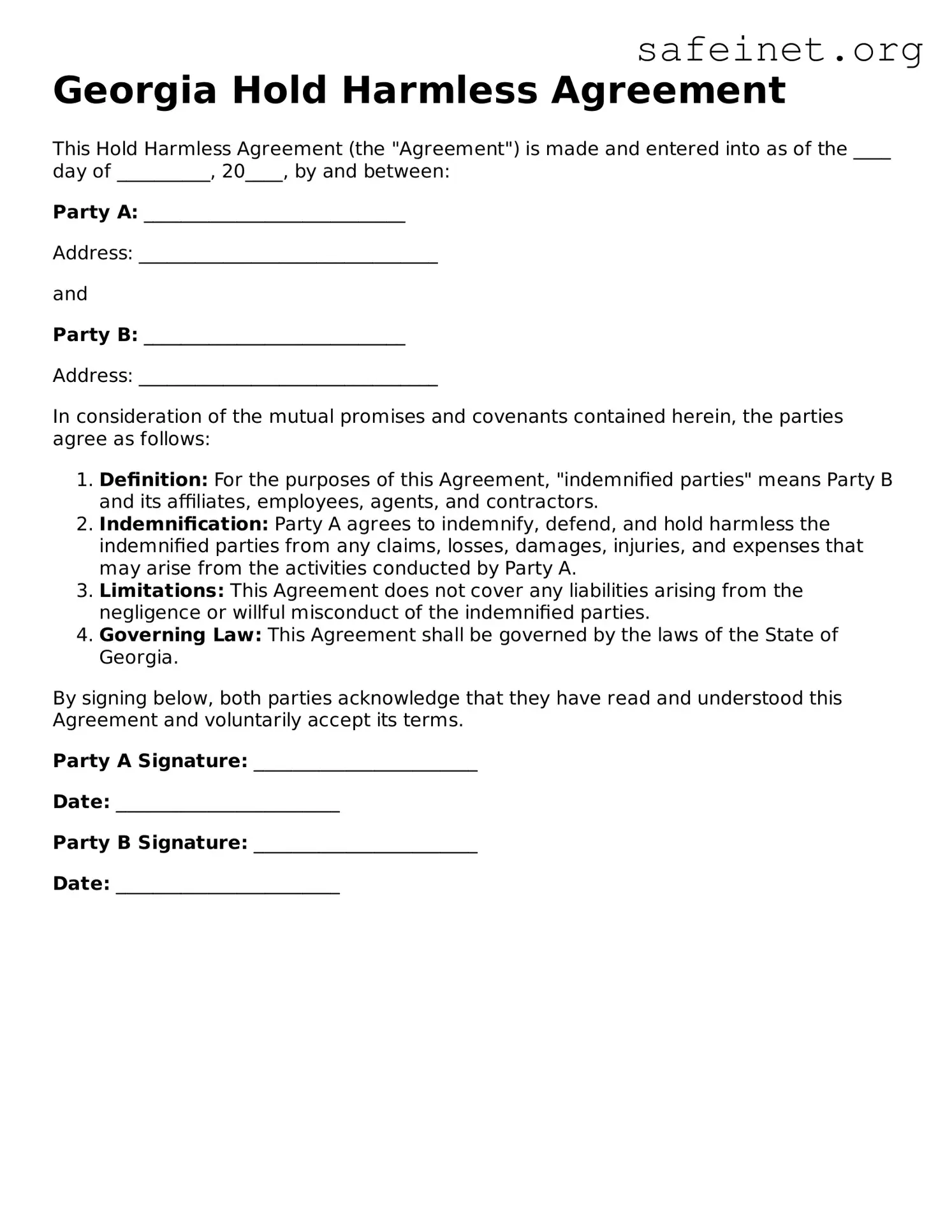What is a Hold Harmless Agreement in Georgia?
A Hold Harmless Agreement is a legal document in which one party agrees to not hold another party responsible for any losses, damages, or legal liabilities that may arise in connection with a specific activity or situation. In Georgia, these agreements are often used in various contexts, including property transactions, construction projects, and recreational activities. The primary purpose is to protect one party from legal claims that could arise from the actions or negligence of another party.
Who typically uses a Hold Harmless Agreement?
Various individuals and organizations may use a Hold Harmless Agreement, including property owners, contractors, event organizers, and businesses. For example, a property owner might request a contractor to sign such an agreement to mitigate risk before beginning work. Similarly, an event organizer could require participants in recreational activities to sign the agreement to protect against potential injuries.
What are the key components of a Hold Harmless Agreement?
A Hold Harmless Agreement generally includes specific elements such as the identification of the parties involved, a clear statement of the activities or situations covered, and the extent of the liability waiver. It may also outline any indemnification clauses, which explain how one party may reimburse the other for any losses incurred. Clarity in language is crucial to ensure all parties understand the terms and limitations of the agreement.
Can a Hold Harmless Agreement be enforced in Georgia?
Hold Harmless Agreements can be enforceable in Georgia, provided they meet certain legal criteria. To ensure their enforceability, these agreements should be clear and unambiguous. Furthermore, they should not violate public policy or attempt to waive liability for gross negligence or intentional misconduct. Courts generally assess each case individually, considering the language of the agreement and the context in which it was signed.
What should individuals keep in mind before signing such an agreement?
Before signing a Hold Harmless Agreement, individuals should carefully read the terms and assess the potential risks involved. It is advisable to seek legal advice if there are any uncertainties or concerns. Understanding the implications of the agreement is critical since signing may limit one's ability to pursue legal claims in the future. Individuals should also consider negotiating the terms if they feel certain aspects are not fair or reasonable.
Can a Hold Harmless Agreement be modified after signing?
Once a Hold Harmless Agreement is signed, modifications can be challenging. However, parties may agree to amend the agreement if both sides consent to the changes in writing. It is essential to document any modifications clearly to avoid potential disputes later. Individuals should keep in mind that relying on verbal agreements can complicate enforcement and create ambiguity about the parties' intentions.
